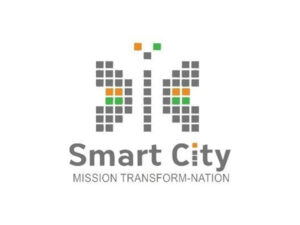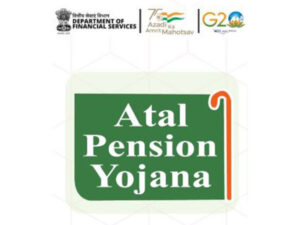Interim budget: CII proposes dedicated Ministry of Investment
New Delhi [India], January 24 (ANI): In a proposal aimed at reshaping the country’s economic landscape, the Confederation of Indian Industry (CII) has recommended the establishment of a comprehensive Ministry of Investment on the investment front for the interim budget.
Envisioned as a singular point of contact, the proposed ministry seeks to streamline and facilitate investment opportunities within India and abroad for Indian investors.
Concurrently, the CII advocates for the promotion of accessible and affordable housing, emphasising sustained attention to the Pradhan Mantri Awas Yojna-Grameen (PMAY-G) and the Pradhan Mantri Awas Yojna-Urban (PMAY-U). The dual-focus initiative reflects a move towards fostering holistic economic growth and addressing critical housing needs.
CII has submitted an extensive set of proposals, considering the geopolitical uncertainties of the times.
The proposals underscore an agenda that aims at balanced, sustainable, and broad-based growth, aligning with India’s vision to be a developed nation by 2047.
Chandrajit Banerjee, the director general of CII, said, “As clouds of uncertainty loom over the global economic horizon, maintaining the balance between economic growth and fiscal consolidation is critical. The government must stick to this year’s fiscal target of 5.9 per cent and aim to consolidate this to around 5.4 per cent for FY25. Achieving this, while creating space for growth, requires specific measures to augment revenue and rationalize expenditures.”
“Agriculture and rural should be a key priority to drive inclusive growth,” Banerjee said.
In addition to PMAY-G, CII recommends increased allocation for rural schemes like Pradhan Mantri Gram Sadak Yojana (PMGSY). The proposal also includes expedited wage payments under Mahatma Gandhi National Rural Employment Guarantee Scheme (MGNREGS) and a push for warehousing in agriculture to reduce wastage.
Further, the CII has proposed increasing the coverage of electronic Negotiable Warehouse Receipts (eNWRs) for better access to finance, trading, and settlement of trade.
For revenue augmentation, CII advocates the continuation of the simplification and rationalization of taxes. The organization also proposes signalling the next set of GST reforms, including a three-rate structure and subsuming petroleum, electricity, and real estate.
Apart from this, the top industry body has called for an aggressive focus on meeting disinvestment targets, incorporating demand-side considerations, and creating a three-year schedule for disinvestment. In simplifying taxes, a key suggestion is to lay down a roadmap for simplifying the TDS rates, reducing categories, and creating a small negative list of payments exempt from TDS.
On the expenditure front, the CII has recommended rationalising food and fertilizer subsidies without impacting deserving beneficiaries. This includes using more current data for better targeting in the food subsidy program and moving towards direct cash transfer to farmers for fertilizer subsidies.
These proposed measures, if implemented, could open up space for the government to support sustainable growth by increasing the capex by 20 per cent to Rs 12 lakh crores.
While this will be a moderation from growth in the last two years, it compares well with the 12 per cent growth in the pre-pandemic period (2015-16 to 2019-20).
As consumption demand continues to remain the largest contributor to India’s GDP, at around 60 per cent, CII suggests linking exemption limits and personal income tax rebates with inflation to boost disposable incomes.
Employment generation is also crucial for India’s inclusive growth. The CII has recommended that the government treat the Urban Employment Guarantee Program as a pilot project with a focus on high-unemployment areas.
Additionally, to boost Female Labor Force Participation in the country, the interim budget could announce measures to build the child daycare industry.
India has an opportunity to leverage its demographics and enable its working-age population to be productively engaged in the global labour market. For this, CII has proposed the setting up of an International Mobility Authority under the Ministry of External Affairs.
With the shifting global value chains, the country must leverage the manufacturing opportunity that comes with it.
For this, there should be a continued focus on improving the ease of doing business by encouraging states to provide all regulatory approvals through NSWS (National Single Window System), further decriminalizing business-facing laws, and integrating all compliances related to environment, forest, biodiversity, air, and water into one.
These steps, accompanied by a phase-out of cross-subsidization of railway and power by industry, can improve the competitiveness of Indian manufacturing.
Further, the sunset date of the concessional rate of 15 per cent tax for eligible manufacturing units, under Section 115BAB, should be extended to March 31, 2025.
On the trade front, CII has suggested rationalising import tariffs on raw materials and intermediate goods and setting up a dedicated Trade Promotion Body with overseas offices.
The body should work on branding and promotion, trade facilitation, capacity building, and awareness generation amongst exporters, especially MSMEs which make up 46 per cent of India’s exports.
Identifying technology and R&D (research and development) as the key drivers for growth, going forward, the CII has called for R&D partnerships between public institutions, academic institutions, and the industry to be strengthened.
Further, noting that Artificial Intelligence (AI) is the future, the industry body has recommended announcing a National AI policy in this regard.
In the area of sustainability, India has committed itself to an ambitious goal of achieving net zero by 2070, which requires massive funding.
The Budget could also pledge funds for the creation of a Green Transition Fund of India, to finance green projects, especially in the private sector, including MSMEs.
The fund could be allocated by the Centre, in partnership with the private sector and a multilateral institution like the World Bank.
Further, embracing green hydrogen can be crucial for reducing India’s rising energy import bill.
For this, green hydrogen/green ammonia should be covered under the definition of the infrastructure sector.
India today has a young population, and to fully leverage its potential, public expenditure on health and education must increase. To this end, the CII has recommended that private sector engagement through PPPs in healthcare and education should be emphasised.
National Bank for Financing Infrastructure and Development (NaBFID) could also design appropriate models as part of its development mandate.






